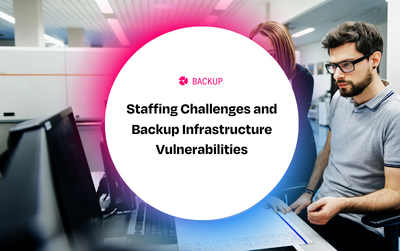3 Key Takeaways from the State of the Cloud Report
The RightScale 2019 State of the Cloud[1] report captured responses from over 750 technology professionals of whom, over half were from enterprise organisations. Our team couldn’t wait to get our hands on this report and uncover the stark realities of cloud expenditure across the enterprise landscape.
In order to save you time, we’ve gone through the report and identified the three biggest takeaways for what the state of the cloud is in today.
Cloud Cost Optimisation
For the third year in a row, optimising cloud costs is once again a top priority for enterprises even as we move in 2020 and as enterprise cloud spending continues to increase.
Even though managing cloud spend has been named the top challenge and initiative, enterprises continue to significantly underestimate the amount of wasted cloud spend. By combining the respondent’s estimations and measuring actual waste it was identified that 35% of total cloud spend is wasted.
As with 2019, cloud usage is expected to grow in 2020 and with an increase in cloud use comes growing cloud spend. 64% of all respondents specify that optimising cloud spend is their number one priority and this percentage increases among intermediate and advanced cloud users.
Under-leveraging Cloud Provider Discounts
Given that optimising cloud costs has been cited as the top priority for enterprises for the third year in a row, it was shocking to see just how many enterprises under-leverage cloud provider discounts. The report cited that less than half – 47% to be exact – of AWS users are leveraging the cost-saving benefits from Reserved Instances and that as little as 23% of Azure users are leveraging Enterprise Agreement.
Even though there is a strong focus on managing cloud costs, the report identified that only a minority of organisations have actively implemented automated policies to tackle this challenge. As indicated in the graph below, there is a surprising number of respondents who have not set up automated policies for the shutdown of workloads after hours and rightsizing instances.
Central Cloud Teams
As we’re seeing organisations adopting cloud-first strategies, we’re also seeing an increase in the creation of central cloud teams. From a high level, central cloud teams define the best practices and tools to aid in the optimisation of cloud usage and the reduction of costs and risks.
Across all business sizes captured in the report, more than half of them (51%) have a central cloud team. Given the stronger need for governance within enterprises and larger organisations, a higher saturation of companies (61%) already has a central cloud team. For those companies who did not have one at the time of the report, 23% of respondents have plans to create a team soon.
Stepping into the next decade there’s no certainty with what changes we will see to cloud usage. In the last week alone, Amazon Web Services announced 77 new products at re:Invent. Given the constant change within our organisations and within the market, it’s getting exponentially harder to decipher how to manage and optimise the cloud. Not only is the market changing quicker than a typical sprint cycle but there is a burgeoning need for talented human capital.
Here’s where Venn IT steps in. We’re a team of highly skilled IT specialists with a knack for matching the best technology solutions to the business needs of some of Australia’s most successful organisations. We make sense of all the noise and help you make sensible cloud choices designed to suit your enterprise requirements.
Check out our latest whitepaper – 4 Fundamental Questions You Need To Answer To Unlock Cloud Savings – where we delve into just how you can manage all the uncertainty that the cloud brings.




